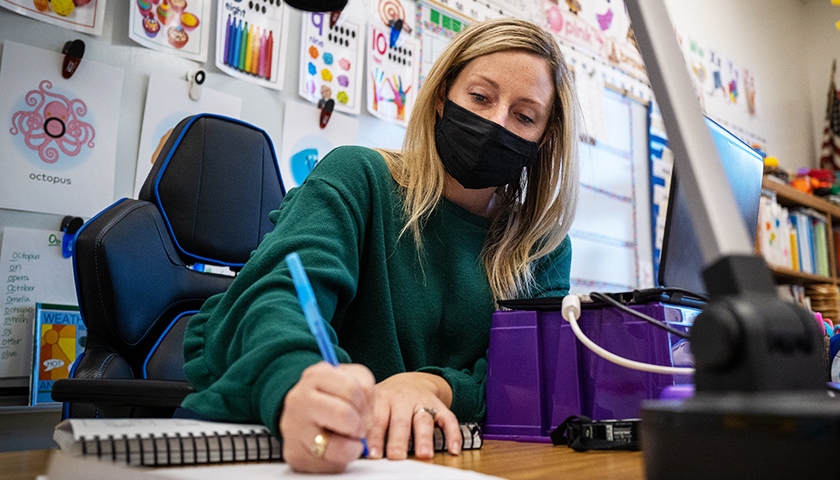by Scott McClallen
The Michigan Department of Health and Human Services (MDHHS) issued updated recommendations for schools to help prevent transmission of COVID-19 within school buildings, reduce disruptions to in-person learning and help protect vulnerable individuals.
The guidance reflects guidelines by the U.S. Centers for Disease Control and Prevention (CDC) on masking and prevention strategies to help operate schools more safely.
“We are committed to ensuring Michigan students and educators are safe in the classroom, including those who may not yet be vaccinated,” Chief Medical Executive Dr. Joneigh Khaldun said in a statement. “MDHHS is issuing this guidance to help protect Michiganders of all ages. We continue to urge all eligible residents to get the safe and effective COVID-19 vaccine as soon as possible as it is our best defense against the virus and the way we are going to end this pandemic.”
The department recommended the following prevention strategies:
1. Promoting vaccination against COVID-19 for eligible staff and students.
2. Consistent and correct mask use
- CDC recommends universal indoor masking for all educators, staff, students, and visitors to schools, regardless of vaccination status.
- CDC has recommendations for proper use of masks.
- CDC recommends schools maintain at least three feet of physical distance between students within classrooms, combined with indoor mask-wearing by students, teachers, and staff, regardless of vaccination status. When it is not possible to maintain a three-foot physical distance, it is especially important to layer multiple other prevention strategies, such as indoor masking, screening testing, cohorting, and improved ventilation to help reduce transmission risk.
3. Screening testing identifies infected people.
4. Ventilation
- Improving ventilation by opening doors and windows, using child-safe fans to increase the effectiveness of open windows, and changing HVAC or air filtration systems.
- Avoiding crowded and/or poorly ventilated indoor activities
- Open or crack windows in buses to improve air circulation, if doing so does not pose a safety risk.
5. Handwashing and respiratory etiquette: Promoting handwashing and covering coughs and sneezes.
6. Staying home when sick and getting tested
- Encouraging students and staff to stay home if sick or having COVID-19 symptoms.
- Encouraging students and staff, regardless of vaccination status, to get tested for COVID-19 if having symptoms or if they are in close contact with someone who has COVID-19.
7. Contact tracing in combination with quarantine: Collaborating with the local health department.
8. Cleaning and disinfection: Cleaning once a day is usually enough to sufficiently remove a potential virus that may be on surfaces. Disinfecting (using disinfectants on the U.S. Environmental Protection Agency COVID-19 webpage) removes any remaining germs on surfaces, which further reduces any risk of spreading infection.
“Our students and staff need to be in schools as much as possible this year,” State Superintendent Dr. Michael Rice said in a statement. “Following the informed guidance from national and state health experts will help keep our students and staff healthy and help maximize student learning.”
The following factors should be used when determining mitigation strategies:
- Level of community transmission of COVID-19.
- COVID-19 vaccination coverage in the community and among students, teachers and staff.
- Use of a frequent SARS-CoV-2 screening testing program for students, teachers and staff who are not fully vaccinated.
- COVID-19 outbreaks or increasing trends in the school or surrounding community.
- Ages of children served in the school and risk associated with school, extracurricular and social activities.
– – –
Scott McClallen is a staff writer covering Michigan and Minnesota for The Center Square. A graduate of Hillsdale College, his work has appeared on Forbes.com and FEE.org. Previously, he worked as a financial analyst at Pepsi.
Photo “Teacher in Mask” by Phil Roeder (CC BY 2.0).





